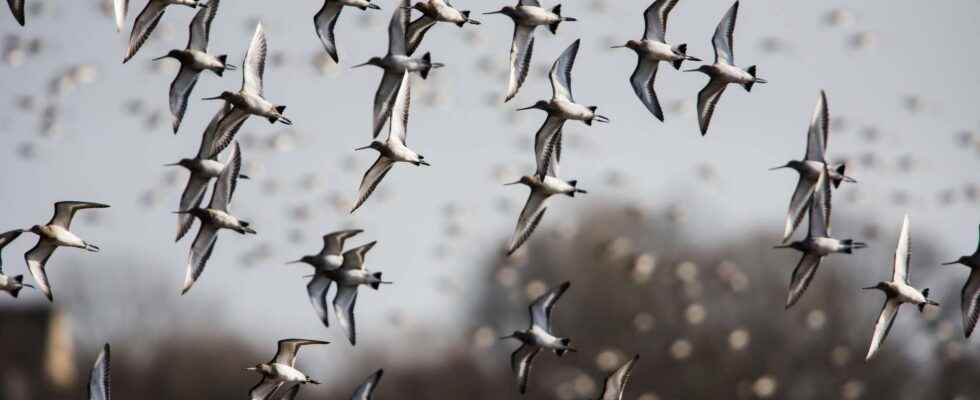Some migratory birds can fly for several days without interruption and therefore without being able to shelter from the sun’s rays. A study carried out on more than 9,000 species shows that the most frequent travelers also often have a clearer plumage which allows them to reflect these rays.
You will also be interested
[EN VIDÉO] A year of animal migrations on the planet: astonishing … Terrestrial globes usually show the boundaries of countries. But animals do not know borders. This is what this amazing video shows us by retracing a year of animal migration on our planet, thanks to millions of centralized data.
One in five bird species is migratory. Not all of them cover thousands of kilometers on each of their migrations but must endure extreme temperature, oxygen availability and light conditions. The species that holds the record for flight migration distance is arctic tern Sterna paradisea which travels more than 70,000 kilometers each year.
Monitoring the flight of red barges Limosa lapponica baueri has, moreover, shown that they were able to reach New Zealand from Alaska, a journey of more than 12,000 kilometers, in just over nine days and without interrupting their flight. So what are adaptations allowing these birds to perform such long migrations ?
Highly migratory birds obviously have morphologies aerodynamic and have, for example, a smooth appearance and long, pointed fenders. Their energy consumption in flight is also relatively low compared to those ofcash little or no migratory. Barges consume indeed 0.41% of their mass per hour in flight and travel 11,000 to 12,000 kilometers per year against 2% per hour for the red-throated hummingbird which travels about 1,100 kilometers per year.
Very long flights and very light feathers
During long flights duration, migratory birds must also cope with high temperatures during the day. It has already been shown that some migratory species fly at higher altitudes during the day than at night, which would allow them to compensate for the heat produced by theabsorption solar radiation and not to overheat in flight. It is, moreover, known that the colors lighter colors absorb less solar radiation than dark colors.
The authors of a study published in the journal Current Biology therefore examined the plumage colors of more than 9,000 species of birds. To do this, they automatically analyzed the pixels images provided by theencyclopedia Handbook of the Birds of the World and assigned a score ranging from 0 = light to 100 = dark to the plumage of each species. They compared the results obtained with the behavior of the species considered as a function of their annual migration distances (from 0 to more than 2,000 kilometers).
Their results indicate that non-migratory species have darker plumage than species that migrate short distances, themselves having darker plumage than species that migrate more than 2,000 kilometers per year. While highly migratory birds tend to have paler plumage than other birds, only seven of the fifteen migratory orders (including pelicans, passerines and shorebirds) follow this trend.
Evolutionary constraints on aerodynamics indeed induce the presence of dark dorsal plumage in certain migrants. A warmer back surface generates less frictional forces with theair and therefore increases the efficiency of the flight.
Interested in what you just read?
.
fs11
